
Rafflesia arnoldii produces the largest individual flower of any species in the world. But you might not want to get too close to it because it has "a penetrating smell more repulsive than any buffalo carcass in an advanced stage of decomposition". [link / W]
The illustration comes from 'Choix de Plantes Rares ou Nouvelles Cultivées et Dessinées dans le Jardín Botanique de Buitenzorg' by Friederich AW Miquel [1863] at BHL, a small book presenting twenty six plates of botanical species from the Buitenzorg Botanical Gardens. Buitenzorg was the one-time capital of Indonesia during Dutch colonial rule and is now locally known as Kota Bogor (Western Java).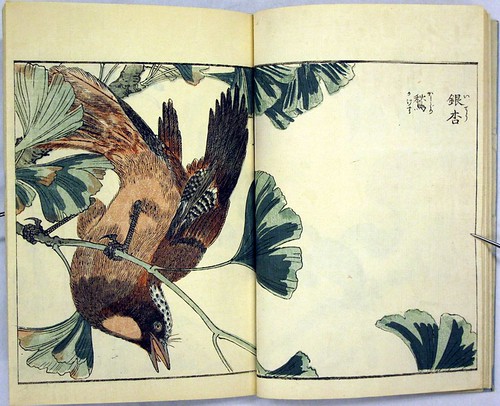
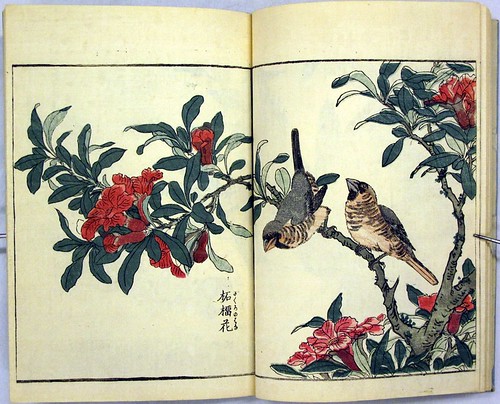
The Katyozu Birds and Flowers album (well, that's what I'm calling it) from 1805 is available in three volumes from the digital collections at Kyushu University Museum. The work is actually owned by the Ethnology Museum in Leiden in Holland. The pseudo-translation of the Kyushu page notes a connection with Siebold and the (foreigner's) island of Dejima at Nagasaki. [somewhat reminiscent of this post]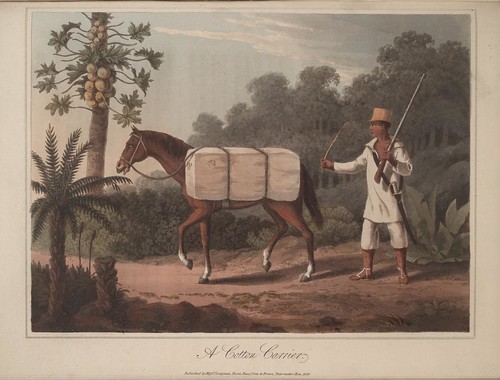
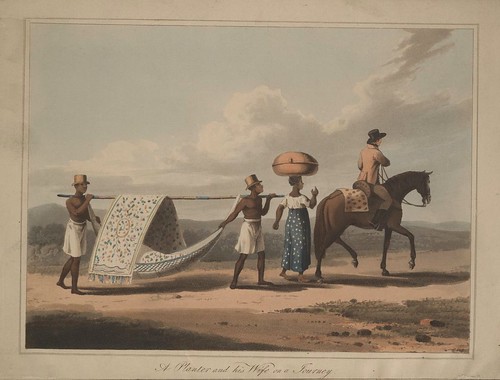
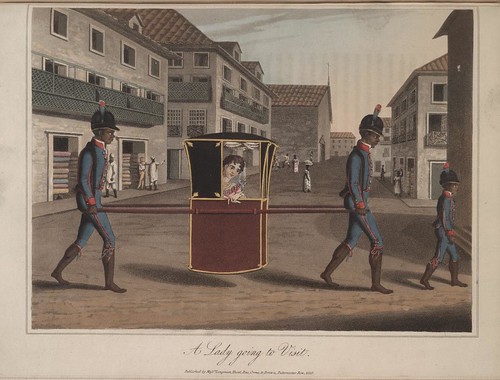
The Archive of Early American Images at Brown University has an enormous array of material pertaining to the Americas and has been featured on BibliOdyssey in the past. The three images above - which I've had for years - are from Henry Koster's 1816 volume, 'Travels in Brazil'.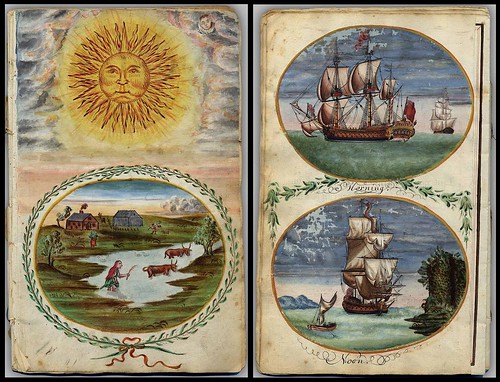
The Journal of George Davidson (1785) from the Rare Book Room. This remarkable document appears to be the record of a mariner from Boston and includes prayers, Freemason material, moral poems as well as paintings and some beautiful handwriting. (That description is from a quickish skim and probably doesn't do it sufficient justice: this is a very interesting booklet worthy of a closer look). [via]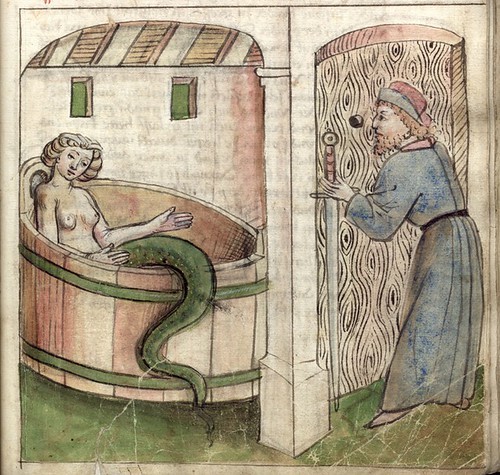
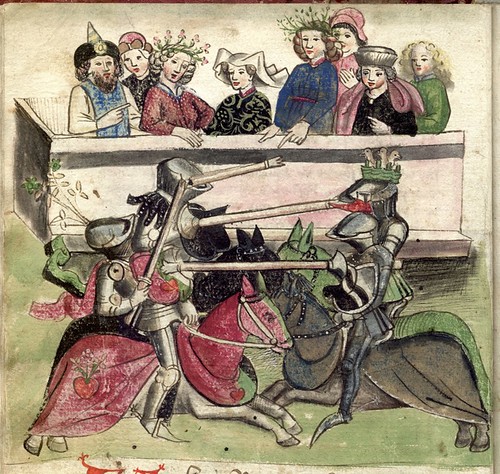
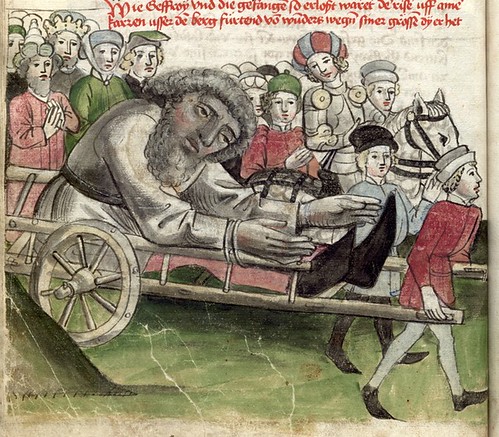

These cropped details are from a 1468 'Melusine' manuscript, hosted by the German National Museum.
Melusine (or Melusina) is something of a pan-European folklore character with variable traits. The female siren figure can be a water sprite or fairy, a mermaid or a snake and the story outlines the consequences for her human husband after he watches the changeling Melusine bathe against her wishes (or similar). It was probably first written down in the 13th or 14th centuries -- its origins in the oral tradition may stretch back to Homer -- and the above images come from a very early manuscript form of the first German translation (from the French) by Thüring von Ringoltingen in 1456. {see: one, two} [via]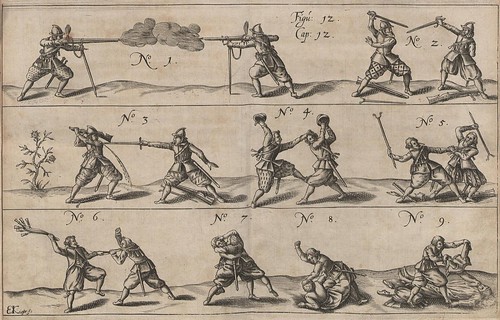
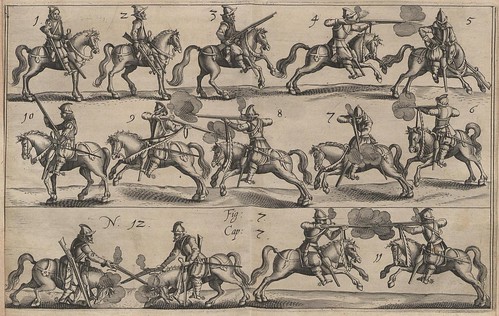
These early cavalry/military and combat training images come from a book by Johann Jacob von Wallhausen from 1616 called 'Darinnen das heütige Kriegswesen in einer perfecten und absoluten idea begriffen und vorgestelt wirdt..', hosted by the SLUB at Dresden [click the book icon; illustrations are in the last few thumbnail pages].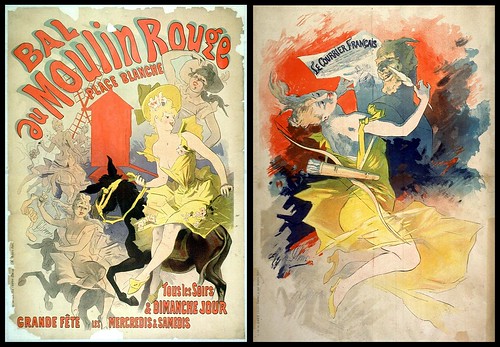
Bal au Moulin Rouge and Le Courrier Français poster images by the fantastic Jules Chéret from the late 19th century. Just gorgeous. These images come from the Versailles database and there are more works by Jules Chéret at Wikimedia.
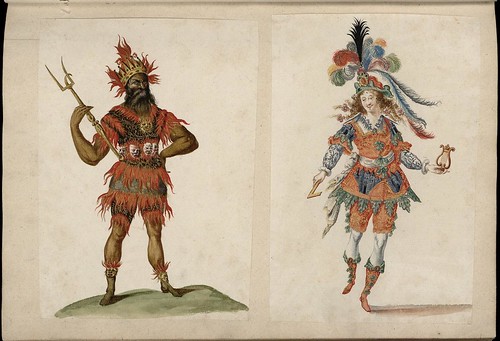
These 18th century opera costume designs -- 'Habillemens et Décoration d'Opéra' -- by Jean Berain are also from the Versailles database.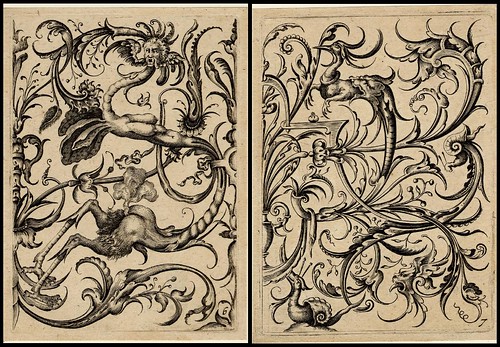
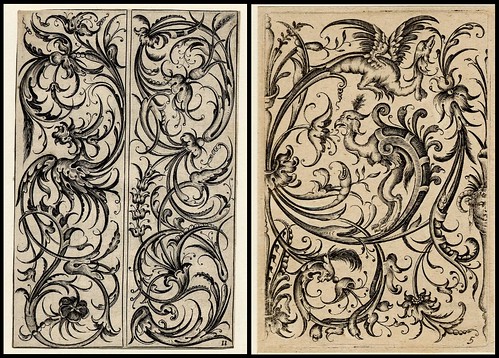
These grotesque ornamental panels are from a suite of twelve prints issued in 1644 in Amsterdam by the publisher Claes Jansz Visscher. The collection - 'Seer Aerdige Grotissen Dienstich' - is a copy of the set of engravings by Johan Bara after an earlier series (1623) by Nicasius Roussel called 'De Grotesco Per utilis ... Liber'. The images above are from the British Museum Prints Database.
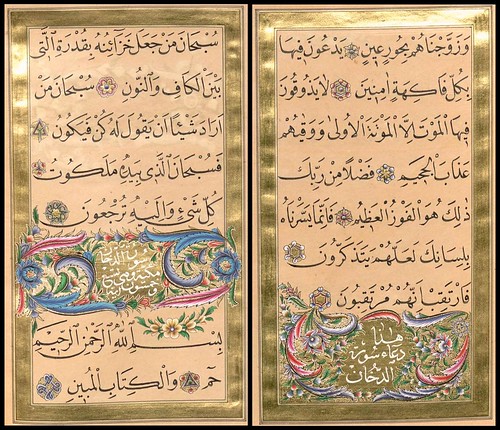
'Gebetbuch der Haremsdame Düsdidil' (Prayer book of the Harem Lady Düsdidil) is an exquisite illuminated manuscript from Turkey made by Hasan RaSid in 1845. If you like manuscript decoration, particularly unusual and beautiful examples outside of the 'mainstream', you should definitely check out this work hosted by the Bavarian State Library [click miniaturansicht for thumbs].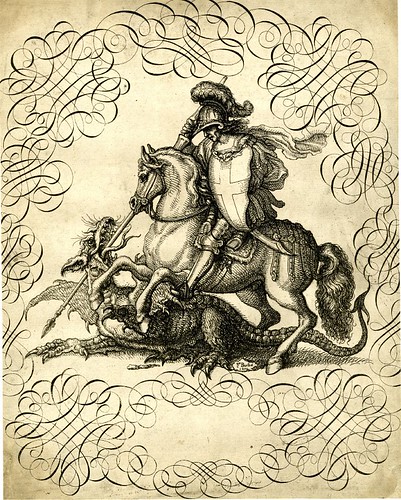
Is this a repeat? I hope not, but I'm sure it happens occasionally {not that there's anything wrong with that!}. I look, I collect, and after the passage of time I forget if I saw it on BibliOdyssey or just in passing at one repository or another. Well, I do know that this 1673 engraving by Francis Barlow of St George slaying a dragon was sourced from the British Museum Prints Database.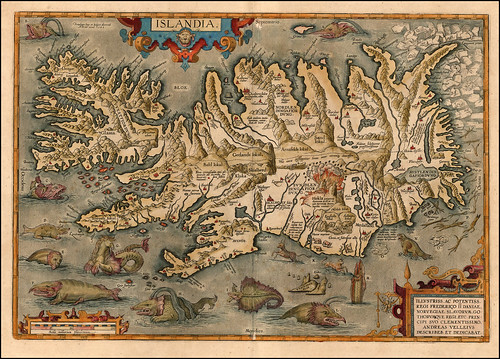
This map of Iceland ('Islandia') from 1609 by Abraham Ortelius may just be my all-time favourite map because of that array of sea beasties. The source site, Rare Maps, has another version in addition to this one, in case you want a different - and slightly cheaper - colour pallet. {nb. I think the original was engraved in c. 1585} [previously related]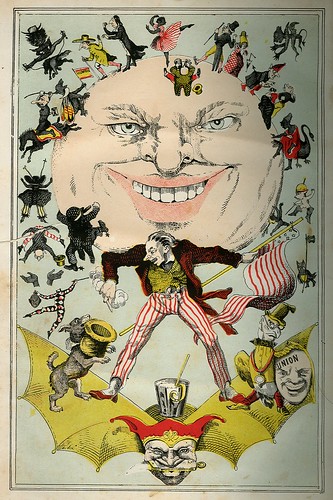
This is a full page illustration from an 1852 magazine called 'Yankee Notions'. I am grateful to Steven Lomazow from Magazine History for allowing this image from his collection to be reposted. Lomazow is a serious collector of vintage magazines and ephemera of Americana.
The National Library of Slovenia [click on 'Art Library' in that top blurb] recently uploaded a batch of prints, watercolours and sculptures from (mostly) 20th century Slovenian artists. It's worth a flick through.
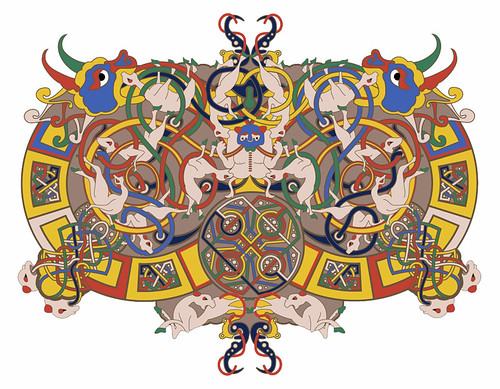
This popped up in some auto-search keyword subscription I have delivered. It's a (duh) digitally rendered reproduction of an illuminated manuscript miniature © Jesse Lang. Between the two of us - using the source model image - we couldn't work out which manuscript it derives from.
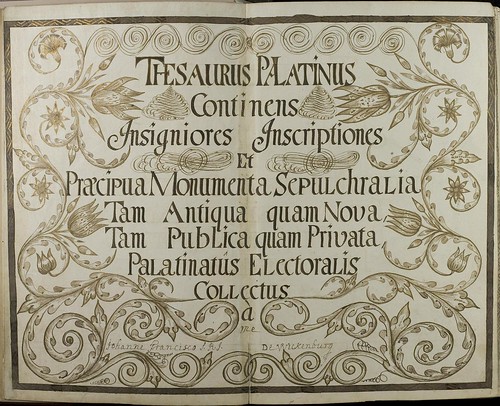



'Thesaurus Palatinus' is a very intriguing manuscript uploaded recently by the University of Heidelberg [click anything below 'inhalt' and then 'vorschau' for a large page of thumbs]. It was produced in about 1750 by Johann Franz Freiherr von Wickenburg and seems to be a compilation and historical record of sepulchre, crypt and tomb inscriptions and architectural designs together with sketches of churches and related structures. It ranges from unsophisticated to beautiful and contains a lot of quasi-calligraphic flourishes and assiduous handwriting; all the hallmarks of an outsider über-nerd.
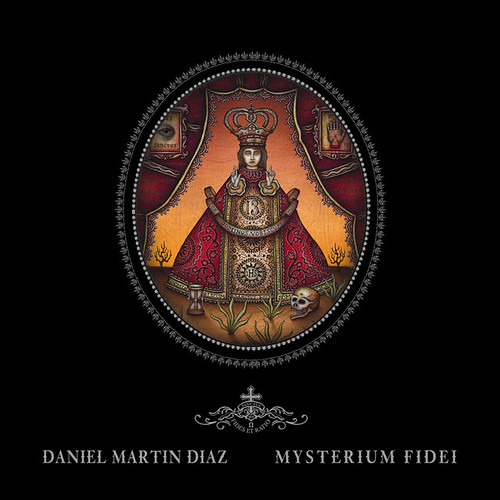
"In this collection of oil paintings, drawings, and prints, Diaz contemplates human suffering and one's undying faith in the afterlife. His mystical imagery reflects the influences of Byzantine iconography, Retabalos, Ex Votos, the Illuminati, ephemera, alchemy, and 16th-century anatomical engravings."
You can't argue with those aspirations. Reviews: one, two. [images / amazon]
Other things...
- Chemistry in Art [via]
- The History of Priddy's Hard has an excellent selection of old regional high-res maps in chronological order {Hampshire area, near Gosport/Portsmouth [sat-map].
- The Getty-UCLA-Picart Project makes available the massive 9-volume 'Cérémonies et Coutumes Religieuses de Tous les Peuples du Monde' (Religious Ceremonies and Costumes of All the People in the World). Its publication began in Amsterdam in 1723 and it contains over 600 engravings. (project background) [I've posted an earlier version of the whirling dervish image that appears in this work previously] Thanks Will C !
- A Monument More Durable than Brass - the new Dr Samuel Johnson exhibition site (to coincide with a real world version) from/at Harvard University's Houghton Library.
- African artist books [via]
- And a few notable recent links from my shared feeds: clickable cubist art map [via]; a bunch of JJ Grandville images; Typewriter Ribbon Tins.



















8 comments :
If you like sea beasties, and I know you do, you have to appreciate Carta marina. But you probably know it and you have probably posted it before ;)
Peacay probably knew about it, but I didn't. wow. thanks.
there's so much here (thank you), and i'm not done yet, but i wanted to say that this is the first time i've ever seen a stinky bottom as an ornament (vasscher/bara).
also, the melusine images are beautiful. thanks!
Taa. Thanks P-E, you prompted me to update the dead links in there! That wikimedia version is excellent.
What I should have said was that the map was my favourite map of all time today '- )
Peacay, I just want to compliment you for having one of the finest blogs I've seen on the 'net ...
great stuff
regards from Namibia
:D Fiend! With only 24 hours in a day you post this! How am I ever to keep up?
hey pk-- those birds and their source are quite treasures -- thanks!
I'm not sure why I was surprised to see Melusine appear in there, but I was. Very silly of me. Surrealism and its inspirations follow me everywhere.
Post a Comment
Comments are all moderated so don't waste your time spamming: they will never show up.
If you include ANY links that aren't pertinent to the blog post or discussion they will be deleted and a rash will break out in your underwear.
Also: please play the ball and not the person.
Note: only a member of this blog may post a comment.